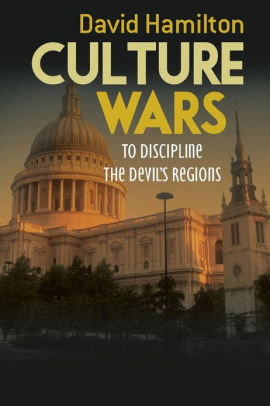- Welcome to FictionDB, Guest
- | My Account
- | Help

Culture Wars — David Hamilton
Geoffrey Chaucer opened his Canterbury Tales with the words When in April the sweet showers fall And pierce the drought of March to the root, and all The veins are bathed in liquor of such power As brings about the engendering of the flower, These gives us insight into the turning of the seasons as we move from the cold and misery of winter to a new time. This book is to herald that change. I particularly explain the cold and negativity of contemporary art and architecture with accompanying immorality of using tax payers money to finance the destruction of their art and culture. When contemporary artists promote and celebrate not only paedophilia but the murder of young children we are faced with very evil people. This negativity, this attempt to destroy a culture and art rather than improve it is quite simply evil. The cyclical view of history, The Wheel of Fortune suggests that we can get on the Wheel going up if we can start producing sacred and holy art and an architecture that derives from what went before not incongruous eruptions that disjuncture cultures and communities. An architecture that makes people feel as if they belong and not pushed out of their communities by such as ugly and drab buildings. There also is a need to re-assess our relationship to the environment and to animals. I also compare the destruction of drama from within. The Nihilist dramatists were shallow and destructive people who spread futility and unhappiness yet all round them they could see children laughing and playing. Cultural Marxist drama aimed to destroy our dramatic traditions from within and spread self-hatred while the writers were made rich by the new Establishment transferring tax payers money to them. I show the contrast of the the great Elizabethan tragedies which had an underling positivity that lead from barbarism to order.
Genres
Click on any of the links above to see more books like this one.

